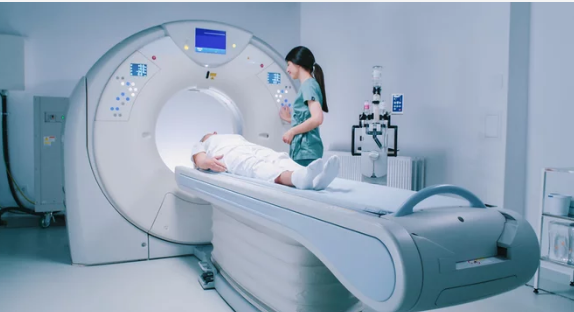Magnetic Resonance Imaging (MRI) is one of the most advanced tools in cancer detection, offering detailed images of soft tissues without the use of ionizing radiation. Its high resolution and versatility make it invaluable for diagnosing, staging, and monitoring certain cancers. But a common question among patients and healthcare professionals is: Can MRI detect all types of cancer?
This article explores the capabilities and limitations of MRI in cancer detection, explaining which cancers it is most effective for, why some tumors are more challenging to detect, and how MRI fits into a broader cancer screening strategy.
How MRI Works in Cancer Detection
MRI uses strong magnets and radio waves to create detailed images of the body’s organs and tissues. Unlike X-rays or CT scans, MRI does not rely on radiation, making it safer for repeated imaging. It is particularly effective for:
- Visualizing soft tissues like the brain, liver, breast, and muscles.
- Differentiating between healthy tissue and abnormal growths.
- Assessing blood flow and tissue composition using contrast agents.
MRI provides high-resolution anatomical images and functional information that can help identify tumors, guide biopsies, and monitor treatment response.
Types of Cancer MRI Detects Well
MRI is particularly useful for cancers located in soft tissue structures, including:
1. Brain and Central Nervous System Tumors
MRI is the gold standard for brain tumor detection and evaluation. It identifies tumor size, location, and involvement with surrounding structures, guiding surgery and radiation therapy.
2. Breast Cancer
For women at high risk or with dense breast tissue, MRI is more sensitive than mammography. It can detect small tumors that may not be visible on other imaging modalities.
3. Prostate Cancer
Multiparametric MRI (mpMRI) improves prostate cancer detection by combining different sequences to assess suspicious lesions, reducing unnecessary biopsies.
4. Liver Cancer
Dynamic contrast-enhanced MRI can differentiate benign liver lesions from hepatocellular carcinoma, particularly in patients with cirrhosis.
5. Soft Tissue and Bone Tumors
MRI is excellent for visualizing soft tissue sarcomas and bone marrow involvement, offering detailed information for treatment planning.
Cancers MRI May Struggle to Detect
While MRI is powerful, it does not detect all types of cancer equally well. Its limitations include:
- Lung Cancer: MRI is less effective than CT scans for detecting small lung nodules due to air-tissue interfaces.
- Small or early-stage tumors: Very tiny lesions may not be visible, especially in organs that move with respiration.
- Cancers in dense or calcified tissue: MRI may have difficulty distinguishing tumors from dense tissue, scar tissue, or calcifications.
- Some gastrointestinal cancers: MRI can be useful for staging but is less sensitive for initial detection compared to endoscopy or CT.
Why MRI Cannot Replace All Screening Tests
MRI is highly sensitive but not universally applicable for every cancer type. Reasons include:
- Anatomical constraints: Certain organs, like lungs or bowel, are better imaged with CT or specialized techniques.
- Cost and accessibility: MRI is more expensive and less available than other imaging modalities, limiting its use for population-wide screening.
- Time-intensive scans: Some MRI protocols can take 30–60 minutes, which is impractical for routine screening in low-risk populations.
Therefore, MRI is often used in high-risk populations or as a complementary tool alongside mammography, CT, PET scans, or ultrasound.
The Role of MRI in Comprehensive Cancer Detection
MRI works best when integrated into a multi-modality approach:
- High-risk screening: For patients with genetic predispositions (e.g., BRCA mutations), MRI can detect tumors that other methods might miss.
- Staging and treatment planning: MRI is crucial for determining the size, spread, and involvement of tumors before surgery or radiation.
- Monitoring therapy: MRI tracks response to chemotherapy or targeted therapy without exposing patients to radiation.
By combining MRI with other diagnostic tools, healthcare providers can increase overall detection rates and ensure more precise treatment strategies.
Emerging Technologies Expanding MRI’s Role
Advancements are making MRI more versatile and capable of detecting a wider range of cancers:
- Whole-body MRI: Used in high-risk patients to screen for multiple cancer types simultaneously.
- Functional MRI and diffusion-weighted imaging: Helps identify cellular changes associated with early-stage tumors.
- AI-assisted MRI interpretation: Machine learning algorithms improve detection sensitivity and reduce false positives.
These innovations may expand MRI’s usefulness, but it still cannot detect all cancers on its own.
Conclusion: MRI Is Powerful but Not Universal
MRI is a highly effective tool for detecting and managing many cancers, particularly those in soft tissues like the brain, breast, prostate, liver, and musculoskeletal system. However, it is not a universal cancer detector. Certain cancers, including those in the lungs, gastrointestinal tract, and very small lesions, may require other imaging modalities for accurate detection.
The key takeaway is that MRI is most effective when used strategically—for high-risk populations, staging, treatment planning, and monitoring—within a comprehensive cancer detection and care plan. Understanding its strengths and limitations ensures that patients receive accurate diagnoses and optimal treatment without unnecessary procedures.
Also Read :
